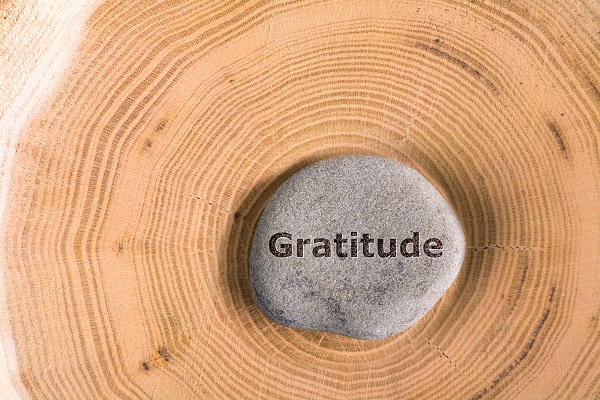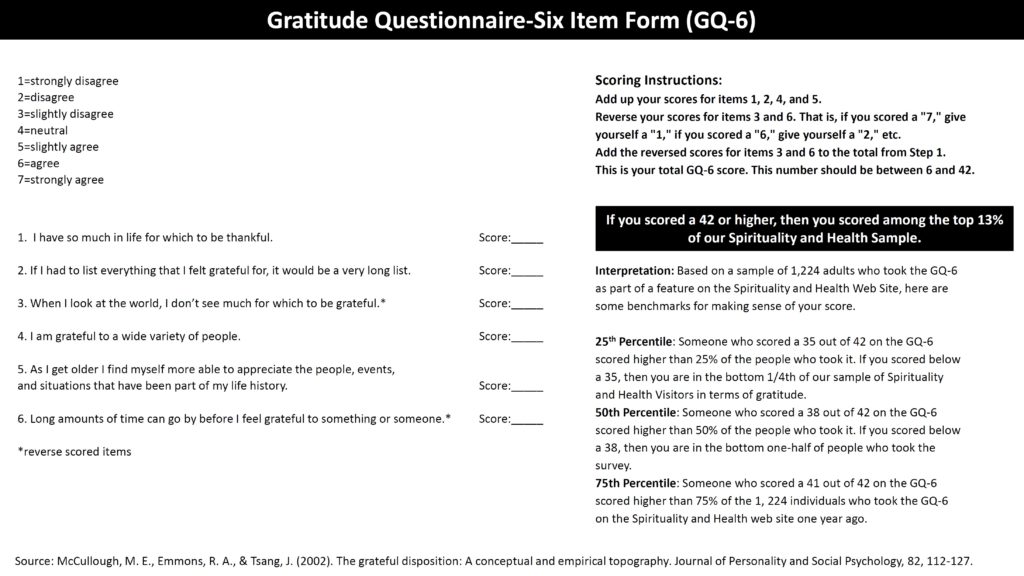September is a time of transition. The warm summer days start to turn into cool fall nights. A light breeze means throwing on a sweater or a blanket onto the bed. Traditionally, it’s also a time for returning to school or work after the summer holiday.
However, this September as we kick off Healthy Aging Month and prepare to celebrate World Gratitude Day on September 21, things will be different. The coronavirus pandemic continues to challenge the rhythm of routine days and seasonal transition for caregivers. What can help? A superpower we call gratitude.
How do we find gratitude?
It’s hard to feel grateful for a dreadful pandemic but can there be silver linings to the coronavirus crisis? For one, families are reconnecting and learning to be “present” with one another, talking over shared dinner, playing more board games or co-viewing streaming movies. Additionally, many employers have come to understand employees can work from home and be productive – flexibility that helps family caregivers.
For caregivers geographically distanced from loved ones or required to distance from loved ones living in assisted living and nursing homes, technology – such as videochatting – offers a bridge to the social isolation – making caregivers grateful for any way to “see” their loved one even if it is virtual.
Gratitude has been defined as our “social glue.” Scientists believe it involved evolutionary adaptation that allowed humans to survive and thrive by creating communal, social circles and by practicing reciprocal altruism – or in simpler terms, it is the feeling of reward and “paying it forward.”
But is gratitude an emotion? A behavior? A personality trait? Robert Emmons and Michael McCullough, two of the world’s top scientific experts on gratitude, define it as “recognizing one has experienced a positive outcome and that there was an external source for this positive outcome.” However, the source of our gratitude does not have to be another person. It can be faith, nature, art – a sense of spirituality. In fact, gratitude is a tenet of many religions including Judaism, Christianity, Islam, Buddhism and Hinduism.1
Emmons described three powerful positive impacts of gratitude on overall health:
1. Amplifies good in our lives that we see in ourselves and others.
2. Rescues us from toxic feelings by offsetting chronic negativity we may feel within and without.
3. Connects us with each other – strengthens and solidifies our relationships with friends, family, neighbors and co-workers.
Gratitude Has an Accrual Effect on Wellness and Healthy Behavior
Numerous studies have been done over the last 20 years exploring the positive health impact of gratitude. By practicing gratitude on a daily basis, scientists have shown we remove toxic emotions and feelings from our body and this in turn makes us healthier.

The other finding from research is gratitude continues to grow over time. An important study looking at links for improved mental health and gratitude found expressing gratefulness through written thank you letters had a cumulative effect – with greater feelings of positivity and gratitude growing over time after 4 weeks and increasing again after 12 weeks. Just like the rings inside of a tree trunk as it ages, gratitude can grow to make you healthier and live longer.2
For instance:
Sleep – A 2011 study published in Applied Psychology: Health and Well-Being showed that spending just 15 minutes jotting down a few grateful sentiments before bed may mean sleeping better and longer.2
Exercise – In an 11-week study, the people who kept a weekly gratitude journal exercised 40 minutes more per week than the control group.3
Healthier Behavior – Another study showed those who practice gratitude are healthier in mind and body and their brains are trained to seek healthier behaviors.4
Less Aches and Pains – According to a 2012 study published in Personality and Individual Differences, grateful people experience fewer aches and pains and report feeling healthier than people who don’t practice gratitude. The study participants exercised more often and were more likely to attend regular check-ups, which is likely to contribute to further longevity.5
How to Practice Gratefulness
Most experts agree that gratefulness is very personal. While some people can simply think about their gratitude to experience health benefits, others get greater benefit from writing in a journal or writing a thank you letter – even if the letter is never sent. Here are Emmons’s tips for achieving the greatest benefits from writing about grateful thoughts:
- Don’t just list things or people you are grateful for – give details and explain how you feel.
- Blend gratitude about “things” such as good health with gratitude for people such as the loved one you care for and the quality time you spend together or stories you have learned.
- Focus on positive feelings and outcomes – don’t allow the negative or challenging thoughts to intrude on your exercise.
- Savor surprises – write about what has brought you joy, not just happy moments but a joyful life and especially things you did not plan or expect.
How Grateful Are You? Take the Gratitude Questionnaire-Six Item Form GQ-6
This questionnaire was created by researcher Michael McCullough. Using the scale below as a guide, write a number beside each statement to indicate how much you agree with it. The higher your score, the more health benefits you may derive from gratitude.

References
1 McCullough, M. E., Emmons, R. A., & Tsang, J. A. (2002). The grateful disposition: a conceptual and empirical topography. Journal of personality and social psychology, 82(1), 112.
2 Wong, Y. J., Owen, J., Gabana, N. T., Brown, J. W., McInnis, S., Toth, P., & Gilman, L. (2018). Does gratitude writing improve the mental health of psychotherapy clients? Evidence from a randomized controlled trial. Psychotherapy Research, 28(2), 192-202.
3 Digdon, N., & Koble, A. (2011). Effects of constructive worry, imagery distraction, and gratitude interventions on sleep quality: A pilot trial. Applied Psychology: Health and Well‐Being, 3(2), 193-206.
4 McCullough, M. E., & Emmons, R. A. (2003). Counting blessings versus burdens: An experimental investigation of gratitude and subjective well-being in daily life. Journal of Personality and Social Psychology, 84(2), 377-389.
5 Armenta, C., Fritz, M., & Lyubomirsky, S. (2017). Functions of Positive Emotions: Gratitude as a Motivator of Self-Improvement and Positive Change. Emotion Review, 9(3), 183–190. https://doi.org/10.1177/1754073916669596
6 Hill, P. L., Allemand, M., & Roberts, B. W. (2013). Examining the pathways between gratitude and self-rated physical health across adulthood. Personality and individual differences, 54(1), 92-96.
©2020 Sherri Snelling

I’m so grateful that God gave me today. I don’t have a lavish lifestyle, but by being a caregiver for a 98 yr old WWII Veteran, I’m just grateful that I get to spend this time with such an amazing human being, & that I’m able to help him in any way that I can. I’ve been with him 24/7, 365, for over 4 yrs now without one day off & of course I’m tired & it takes a toll on me that I couldnt have anticipated, some days all i can do is cry & pray for better days. As challenging as it can be, I’m so thankful & grateful that I’m able to give so much to my hero, & what I receive in return is priceless!!
Brenda:
Thank you for everything you do – especially for our veterans who deserve our thanks and support!